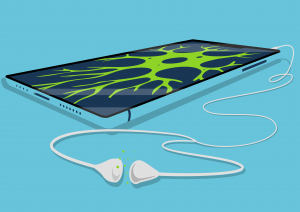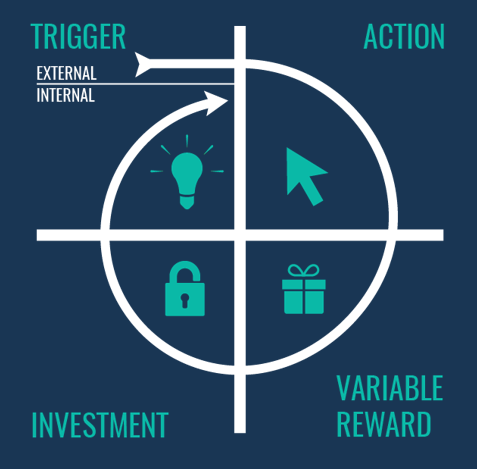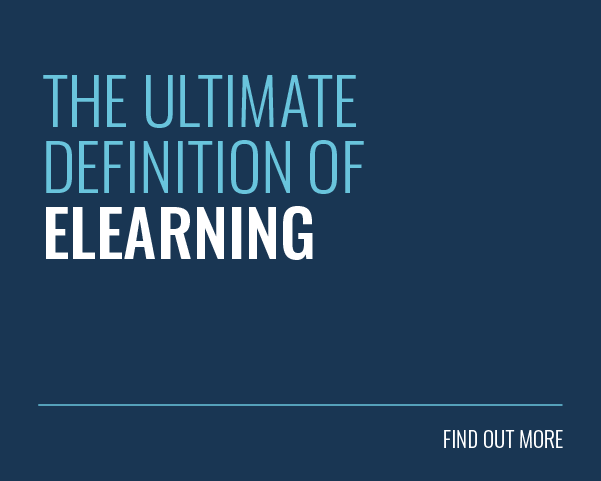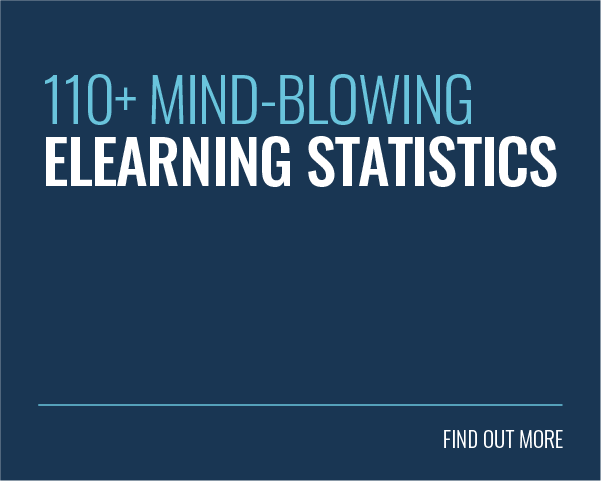 Changing behaviour doesn’t happen overnight. Changing our routines, beliefs or the way we act can be a Sisyphean challenge. Just when we think we’ve climbed the mountain of change, we are hit by the boulder of regression. It can often feel like we’re hard-wired to stay in our lanes and stick to what we know. But that doesn’t have to be the case! Once we’re motivated into action, there are few things that can stand in our way. Throughout this article, we’re going to take a look at a four-phase process for creating a habit, called ‘The Hook Model’.
Changing behaviour doesn’t happen overnight. Changing our routines, beliefs or the way we act can be a Sisyphean challenge. Just when we think we’ve climbed the mountain of change, we are hit by the boulder of regression. It can often feel like we’re hard-wired to stay in our lanes and stick to what we know. But that doesn’t have to be the case! Once we’re motivated into action, there are few things that can stand in our way. Throughout this article, we’re going to take a look at a four-phase process for creating a habit, called ‘The Hook Model’.
This model is the key to unlocking the hidden potential within your learners. It will also help to make your approach to learning and development more effective. But first, let’s start with examining the nature of habit itself. We have even named it as one of the 10 learning models we think you simply have to know.
What Is a Habit?
A habit is a pattern of behaviour that is replicated frequently. Habits have an ‘automatic’ or subconscious character about them as the performer will often repeat the behaviour without even realising they are doing it. Absent-mindedly biting your nails, for instance, would be considered a (bad) habit.
Moreover, habits are, by their very nature, hard to give up. If it’s easy for you to stop doing something, then it was probably never a habit in the first place. Take smoking, for instance. If it’s easy for you to quit, then there’s a good chance you don’t have a smoking habit.
It’s also important to realise that there are good and bad habits, just as there are good and bad behaviours. Organisational success can often come down to employees forming good habits and discarding bad habits. Sounds simple, right? But it’s not an easy task.
Why Do We Form Habits?
The average person makes 35,000 decisions every day. Our brains are persistently looking for new ways to save energy, and forming habits help us do exactly that. After all, when an activity becomes habitual, we’re often able to complete it in ‘autopilot’ mode. This low energy approach frees up brain space, allowing us to focus on more intensive tasks.
Psychologist Dean Ware puts it like this: “When brain cells communicate frequently, the connection between them strengthens and the messages that travel the same pathway in the brain… begin to transmit faster and faster. With enough repetition, these behaviours become automatic”.
There’s a reason why Barack Obama wore only two different colours of suit and ate the same breakfast every day. It freed up more capacity for him to deal with life’s tougher decisions.
Why Are Habits Important?
Every year we set ourselves a series of resolutions. We may challenge ourselves to eat better, hit the gym or learn a new skill. Unfortunately, more often than not, we fail to achieve these goals. In fact, research suggests that 80% of all new year resolutions have failed by February. Similarly, when lockdown started in March 2020, many of us vouched for making a habit of the runs, home exercises and baking we were all doing.
But the resolutions often fail because we don’t turn the new behaviour into a rock-solid habit. Take going to the gym. This is a manual process. Turning it into a habit requires automating the process as much as possible. This requires time, dedication and the removal of obstacles. If we keep it up, the impetus becomes stronger until it turns into something natural and innate.
How Long Does It Take to Form a Habit?
According to research from University College London, it takes us 66 days (on average) to form a new habit. In other words, if you can prompt your learners to behave a certain way for 66 days in a row, you’ve officially changed their behaviour.
The Hook Model: How Do We Form a Habit?
So, as we have explored, forming a habit isn’t easy. But luckily for us, there is a habit-forming model that has proven to be effective. The Hook Model, created by author Nir Eyal, suggests that there are four elements required for behaviour to change and habits to form. The model utilises consecutive hook cycles to drive engagement and encourage action, without the need for costly advertising or aggressive messaging. Let’s break down the four different stages:

- The ‘Trigger’ prompts the action. Triggers can be external (for instance, a download link in an email). They can also be internal (such as a subconscious urge).
- The ‘Action’ or desired behaviour comes next. In the L&D world, this could be the learner completing a piece of content on our platform. The action was prompted by the trigger, with some kind of reward in mind.
- Next up is the ‘Variable Reward’. Here, the user gets a reward for their activity. The rewards offered should follow no fixed pattern.
- By the fourth and final stage, the user has made an ‘Investment’ into the hook cycle. This investment takes numerous forms. It could be financial, time-based or effort-based.
This investment makes it easier to begin the hook cycle anew. After all, you’re more likely to reinvest into ventures that have sunk costs. As such, we start the hook cycle anew, again and again, until the habit is formed.
Why Do We Use Variable Rewards to Form Habits?
By varying the rewards you offer, you are appealing to a powerful cognitive quirk: our natural desire for predictability. Nir Eyal calls variability our ‘cognitive nemesis’. It drives curiosity and causes our brains to seek out new patterns. This can often override functions like self-control and moderation.
This is one of the reasons that gambling can be addictive. Luckily, in this case, you’re using the power of variability to form good habits.
How Can Learning Professionals Utilise The Hook Model?
The Hook Model can be used to create habits within an online learning environment. For instance, we use ‘Streaks’ on our mobile app solution, The Knowledge Arcade. This feature rewards learners for consistently completing an action over a specific period of time. For example, if they login once a day for five days in a row, they earn a special virtual badge. Let’s take a look at how that fits the model:
- Trigger: The user is sent a push notification that requests they login to consume content.
- Action: User logs into their learning environment.
- Variable Reward: The user receives an XP boost for logging in. As a variable element, they also get access to new (and differing) content each time they enter the environment.
- Investment: The learner gradually invests their time and effort into the learning environment. They may also earn status within the learning community. This investment makes them more likely to repeat the hook cycle again (and again).
Final Word
Even with the right level of motivation, changing behaviour can be tough. After all, behaviour change requires creating new habits. And creating new habits requires time and dedication. Thankfully, The Hook Model provides us with a blueprint for success.
If we supply learners with a trigger that results in an action with a variable reward, then their investment level will increase. This, in turn, helps to encourage them to commit to the cycle one more time. Once more unto the breach, dear friends!
Learning technology solutions like The Knowledge Arcade and The Academy LMS use game mechanics like ‘Streaks’, ‘Badges’, ‘Levels’ and ‘Leaderboards’ as habit-generating hooks. If you use these tools in the right way, you’ll have the ultimate habit-forming machine as part of your overall learning arsenal.
Make learner engagement a habit, with The Knowledge Arcade. Create a customisable learning environment, build a community and drive real behaviour change. Sign up for a free demo of our mobile app solution today!








